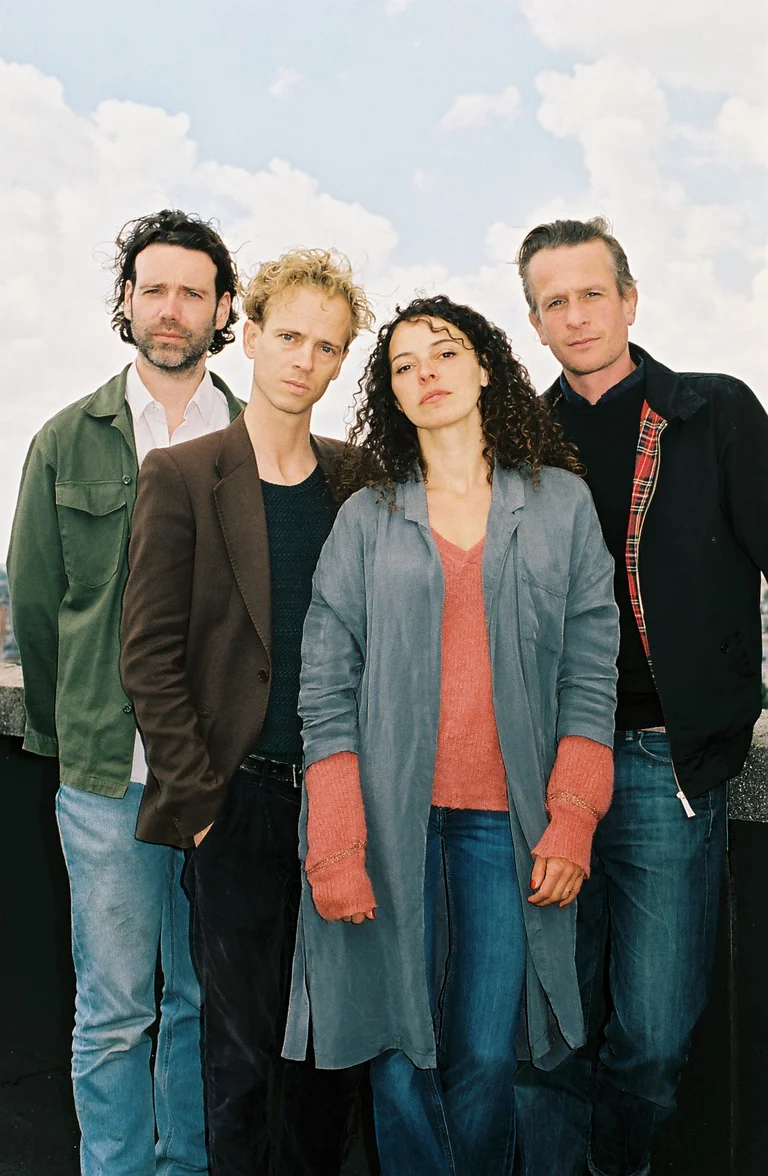
See what war is!
In Guernica Guernica, the theatre collective FC Bergman explores Pablo Picasso's paintings and images of war.
Text: Andreas Wilink
Sometimes, only an image remains and it leaves a deeper mark than the event itself. The Guernica painting, created in 1937 and first exhibited at the Paris World Exhibition, has been housed in Madrid's Museo Reina Sofía since 1992. Its depiction of horror is iconic. It gathers Picasso’s motifs and forces them together into a visual lament: the virile bull we know from the Minotauromachie of the Spanish bullfighting aficionado; the horse tormented to the point of death, echoing the corrida; the pain of the creature and of humankind — or rather, humanity itself: profiles of screaming faces, fragmented bodies, decapitated torsos, flickering flames in between, and above it all the eye of God, disguised as a ceiling lamp Picasso's allegory draws on Christian symbolism and the themes of the apocalypse and passion, as well as on art history and the style of Soviet revolutionary films. This 3.50 x 7.80 metre panorama of panic is a reaction to the terror bombs dropped by Franco's fascists on the Basque town of Guernica, carried out by Hitler's Condor Legion and Mussolini's troops. The dynamics and energy, and the dramatic intensity of narrative representationalism and counter-representationalism, are stage-like and almost call for the theatre. The writer Michel Leiris called the work an 'obituary’. This is now being extended by theatre collective FC Bergman, whose name is derived from the great Swedish director.
Founded in 2007 by, among others. Stef Aerts, Joé Agemans, Thomas Verstraeten and Marie Vinck, and long associated with Toneelhuis Antwerpen, their performances are imaginative, visually powerful, intense and truly distinctive. A transformation always takes place – into a wordless, musical and visually charged art space, with movement within it. In Guernica Guernica, the collective examines images of violence and reflects on war, how its image is formed, how narratives are invented, and how the war of images becomes a weapon. Images can create distance as much as they can evoke empathy. Stef Aerts and Marie Vinck refer to these as 'archetypes', which they also create via the scenographic form, and which Aby Warburg calls 'pathos formulas' — an emotional expression accessible to the collective.
The central element of FC Bergman is the interaction between the performers, the artists, and the audience. This 'point of contact', as Aerts and Vinck describe it, is essential for their 'confrontation' with Picasso's work. When they saw the painting live in Madrid, it seemed to them 'like an old friend'; they knew it so well from illustrations, interpretations, and photos documenting the bombing at the time.
Aerts and Vinck agree that their stage works can be described as grim and dark fairy tales of the real, whose suggestive poetry is completely free of any agitational intention. Recurring motifs include violence, the agony of the creature, the ‘sabotage’ of life by human hands and the workings of control mechanisms. In the fabulous production The Sheep Song, for example, we see a sheep – embodies by an actor inside its fleece – that experiences first-hand, up to the point of a forced surgical metamorphosis, what human nature entails in all its destructive inhumanity. In this way, fundamental questions of existence are touched upon. And we look with productive bewilderment and shame at the world that FC Bergman presents to us.
The article appears in Kultur.West as part of the Ruhrtriennale Special 2025.
